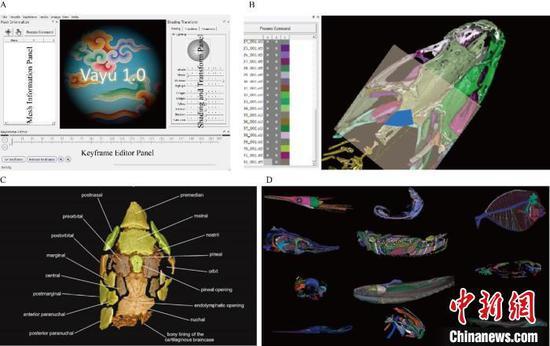Chinese naval surface groups have recently conducted operations near Japanese waters, while amphibious units are engaged in military drills in the contested South China Sea, according to reports from USNI News. These developments mark a notable escalation in Beijing’s maritime activities amid heightened regional tensions and ongoing disputes over territorial claims. The maneuvers underscore China’s growing naval capabilities and strategic focus on asserting control over key maritime areas, raising concerns among neighboring countries and international observers.
Chinese Naval Surface Groups Conduct Strategic Patrols Near Japanese Waters
Recent movements in the East Asian maritime theater have seen Chinese naval surface combatants undertaking extended voyages near the maritime boundaries of Japan. These deployments are viewed as a clear demonstration of Beijing’s growing maritime assertiveness and enhanced blue-water capabilities. Among the vessels observed were several guided-missile destroyers and frigates equipped with advanced radar and missile systems, conducting coordinated patrols and surveillance operations. These maneuvers underscore China’s intent to project power and maintain a persistent presence in contested waters, heightening regional security tensions.
Meanwhile, farther south, Chinese amphibious landing groups are actively engaged in rigorous training exercises within the South China Sea. These drills involve complex amphibious assault tactics, including beach landings and rapid insertion operations designed to sharpen troop readiness for potential contingencies. Key components of the amphibious task groups include:
- Type 075 amphibious assault ships providing command and logistic support
- Type 071 landing platform docks for troop and vehicle transport
- Marine infantry battalions practicing joint maneuvers with air support
| Naval Group | Main Ships | Primary Activity |
|---|---|---|
| Surface Combatants | Guided-missile Destroyers & Frigates | Maritime patrol & surveillance near Japan |
| Amphibious Group | Type 075 & Type 071 Ships | Amphibious assault drills in South China Sea |
Amphibious Assault Exercises Intensify in South China Sea Amid Regional Tensions
Recent military maneuvers in the South China Sea have seen Chinese amphibious assault groups markedly increase the intensity and frequency of their training exercises. These drills, which include live-fire rehearsals and complex landing operations on contested islands, underscore Beijing’s intent to sharpen its rapid deployment capabilities amid growing geopolitical strains in the region. Observers note that the exercises are designed to demonstrate power projection and readiness to assert control over vital maritime routes and territorial claims challenged by neighboring nations.
Key elements of the ongoing exercises include:
- Combined arms coordination between naval vessels, landing craft, and marine infantry units
- Amphibious landing simulations involving rapid deployment from sea to shore under contested conditions
- Enhanced communication drills to ensure streamlined command and control during multi-domain operations
- Live-fire artillery training targeting sea and shore objectives to improve precision and lethality
| Exercise Component | Focus Area | Duration |
|---|---|---|
| Landing Craft Drills | Amphibious Operations | 3 Days |
| Live-Fire Artillery | Target Accuracy | 2 Days |
| Command Coordination | Communication Efficiency | 1 Day |
USNI Experts Recommend Enhanced Multilateral Naval Cooperation to Maintain Indo-Pacific Stability
USNI experts emphasize the urgency of strengthening multilateral naval partnerships as Chinese naval activities increase in the Indo-Pacific region. Recent maneuvers, including Chinese surface groups navigating close to Japanese waters and amphibious units conducting exercises in the South China Sea, have underscored vulnerabilities that allied forces must address collaboratively. These developments prompt calls for enhanced intelligence sharing, joint maritime patrols, and coordinated readiness drills among regional stakeholders to ensure freedom of navigation and deter potential escalations.
Key recommendations from the analysts include:
- Expansion of combined naval exercises involving the U.S., Japan, Australia, and Southeast Asian partners.
- Standardization of communication protocols to improve interoperability during crisis response.
- Investment in emerging surveillance technologies to provide real-time situational awareness over contested waters.
Below is a summary of recent Chinese naval deployments and the corresponding multilateral response measures proposed by USNI experts:
| Chinese Naval Activity | Location | Proposed Multilateral Action |
|---|---|---|
| Surface Group Transit | Near Japanese Territorial Waters | Joint Maritime Domain Awareness Patrols |
| Amphibious Group Exercises | South China Sea | Multinational Amphibious Training Drills |
| Submarine Movements | Western Pacific Corridor | Enhanced Anti-Submarine Warfare Collaboration |
Future Outlook
As tensions continue to simmer in the Indo-Pacific region, China’s recent deployment of surface groups near Japan and amphibious exercises in the South China Sea underscore Beijing’s determination to assert its maritime presence. These maneuvers signal a persistent challenge to regional security and the established order, prompting vigilance among neighboring countries and international observers alike. The evolving strategic landscape calls for close monitoring as all parties navigate a complex web of diplomacy and deterrence in one of the world’s most contested waters.




